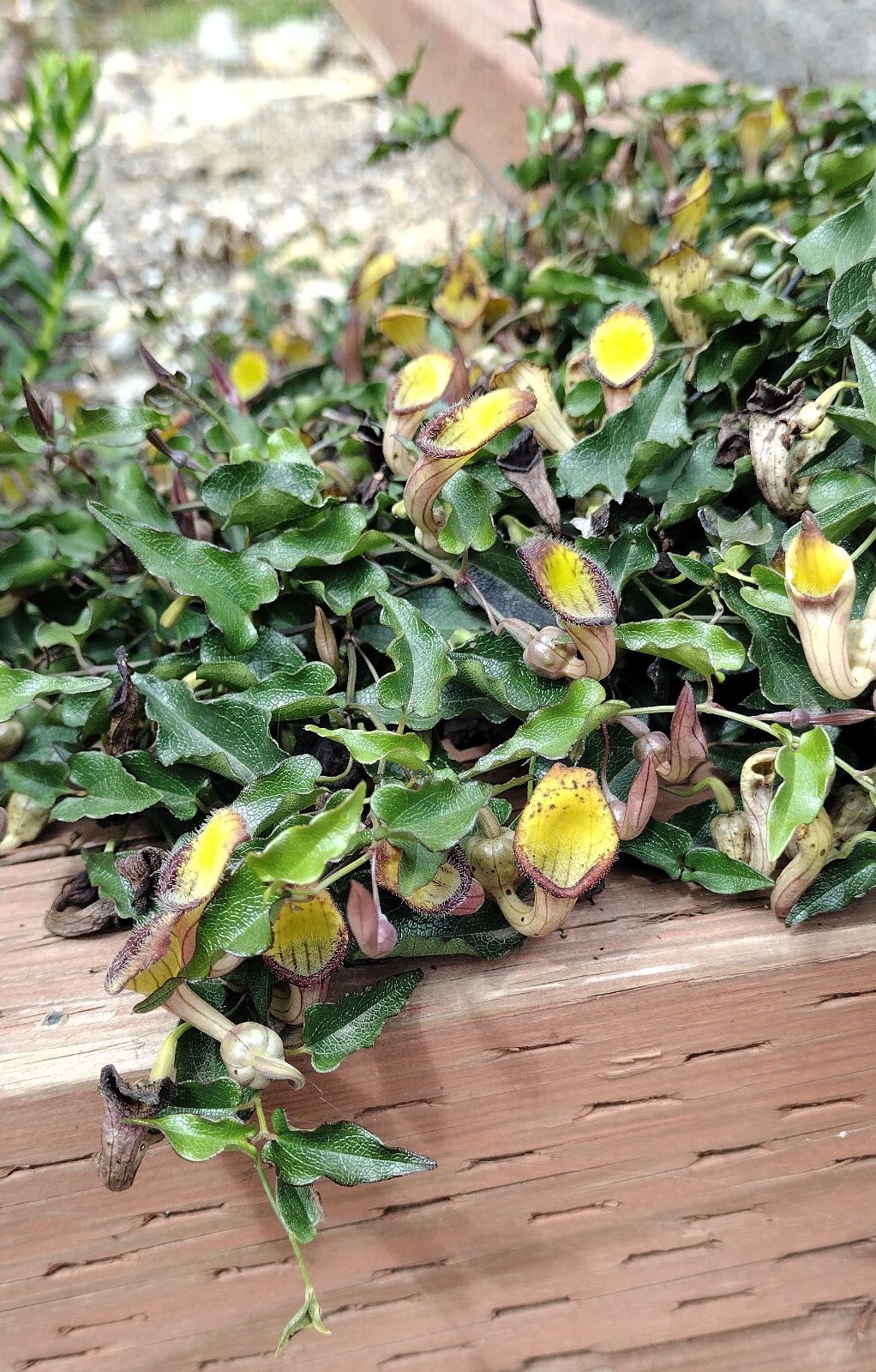Aristolochia sempervirens
Credits
Article from Bean's Trees and Shrubs Hardy in the British Isles
Recommended citation
'Aristolochia sempervirens' from the website Trees and Shrubs Online (treesandshrubsonline.
Genus
Synonyms
- Aristolochia altissima Desf.
Chiefly of botanical interest, and not very hardy, this species is not common in gardens, although one sees it occasionally cultivated in the south and west country. It has smilax-like leaves, with three or five prominent veins, heart-shaped, 2 to 4 in. long, bright green, and quite glabrous, as are also the slender, six-ribbed stems. Flowers solitary, stalks slender 1 to 11⁄2 in. long; perianth yellow-brown, striped with darker lines, 11⁄2 in. long, bladder-like at the base, the upper part somewhat funnel-shaped, but doubled back on itself, expanding at the mouth into one ovate, oblique lobe. Seed-vessel oblong, 11⁄4 in. long, 3⁄4 in. wide, minutely downy. Bot. Mag., t. 6586.
Native of S.E. Europe, and N. Africa. At Kew it has to be grown against a wall, and even there in severe winters is cut to the ground. It is of prostrate or scrambling habit but some forms (previously known as A. altissima) the shoots may be 8 to 10 ft high, which flower from June to August. The form grown in the R.H.S. Garden, Wisley, Surrey, is completely hardy, however, and makes a useful ground cover.
[Lightly edited from Bean’s original text for Aristolochia altissima, to reflect the name change to A. sempervirens. JMG October 2023]

